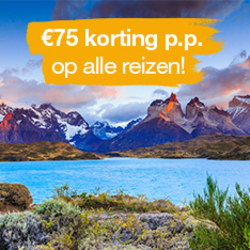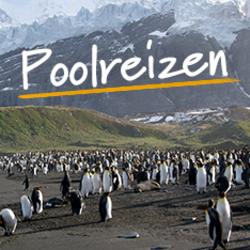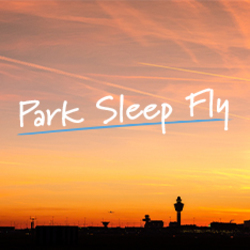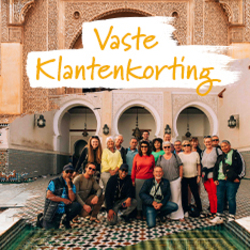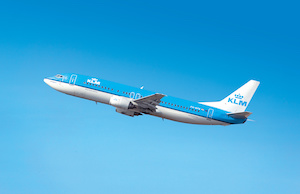Profiteer t/m 2 mei
BekijkFood
- All breakfasts, 15 lunches and 16 dinners included. Traditional Mongolian diets are very meat and dairy heavy. Whilst there will be opportunities to try some of these products such as dry-curd and fermented mare’s milk, the meals provided in the ger camps are generally western meals, at times with an Asian influence. There will normally be some form of soup and salad as well as a main course and desert. Vegetarians are generally well catered for, if you are vegetarian or have other dietary requirements please make sure to inform us in advance. Breakfasts can vary from place to place, some are buffet style whilst others are set, normally cereal, bread and possibly a hot dish will be provided. On some days a pack lunch will be provided, this is often still a proper meal (though without the soup). Water is provided and will generally be from 5L water-containers so make sure to bring a water bottle to decant into. Tea, coffee, soft drinks, beer, vodka and (most of the time) wine are available to buy at the ger camps. There is opportunity to buy snacks in Ulaanbaatar and on a couple other occasions along the way when we drive through towns or villages.
Activities
- Culture
- Festival Holidays
- Natural Wonders
- Cultural Wonders
-
1
Start Ulaanbaatar.
The group flight is scheduled to arrive in Ulaanbaatar this morning. The tour starts at our hotel in the city centre. This afternoon/evening there will be a welcome briefing in the hotel, followed by a group welcome dinner. *Standard Hotel*
-
2
Ulaanbaatar sightseeing.
We have the whole day to discover Ulaanbaatar. Our sightseeing tour will include a visit to Zaisan Hill where we'll see the memorial painting which honours allied Mongolia and Soviet soldiers who fought in World War II. We'll also visit the Bogd Khaan Winter Palace Museum, which houses one of the largest collections in the country and we'll go on a cashmere factory tour. *Standard Hotel*
-
3
Transfer to Khustain Nuruu N.P trek to see wild horses.
In the morning we head west out of Ulaanbaatar towards Karakorum, making a detour to the KhustainNuruu National Park, 2 hours west of UlaanBaatar. KhustainNuruu is famous for the re-introduction of Mongolia's wild horse. The Takhi Horse or Przewalski's horse was once native to Mongolia and almost became extinct earlier this century, though thanks to the efforts of several Mongolian and international organizations, these magnificent wild horses now roam once again on the steppes of KhustainNuruu National Park. We will visit the Project Information Centre and take a guided hike to see the wild horses before spending our first night in a traditional Mongolian Ger. *Ger Camp*
-
4
Drive to Little Gobi Desert; visit Khogno Khan Mountain; opportunity for bird and wildlife watching.
After breakfast we continue our journey westwards towards Karakorum along an asphalt road. Today's destination, the Mongol Els or 'Little Gobi Desert' as it is known, is a unique belt of sand dunes in the steppe. Arriving at lunchtime, we check into a nearby ger camp and after lunch head out to explore the surrounding region. It is an incredible sight to witness the Bactrian camels wandering the desert dunes whilst horses graze on the green steppe nearby. We will also visit Mt Khogno Khan, the small temple at its base. This region is also renowned for its birdlife, including steppe eagles. Mt Khogno Khan offers a great spot for bird watching where we will stay for a while before we return to camp in the late afternoon. *Ger Camp*
-
5
Karakorum; visit Erdene Zuu Monastery.
We start the day with a (90km) transfer to the 13th century capital of the Mongol Empire - Karakorum. Karakorum was established by Ogedei Khan and remained the Mongols power base until Khublai Khan established Beijing as the capital. Here we will visit the Erdene Zuu Monastery (meaning Hundred Treasures), this is the largest Monastery in Mongolia, built in 1586 under the direction of Abtai Khan on the ruins of the ancient capital. Much of the monastery was destroyed during Stalin's purges of the 1930's but an impressive wall with 108 stupas and a number of temples still remain. *Ger Camp*
-
6
Transfer to Arvaikheer via Shankh Monastery and explore the museum.
We drive on a paved road to Arvaikheer, the capital of Ovorkhangai Aimag and on the northern edge of the Gobi. On the way to Arvaikheer we visit Shankh Monastery, once the home of the great Mongolian theorist Zanabazar. We should arrive at Arvaikheer during the middle of the afternoon and check into our hotel. In the afternoon there will be time to visit the local museum, which contains nature collections, stone figures and Turkic scripts. *Standard Hotel*
-
7
Bayan Gobi via Mt Ikh Bogd.
After an early breakfast we start towards Orog Lake via Bayanteegsoum, a coal-mining centre. Passing over Taats River, the majestic Ikh Bogd Mountain should be visible in the distance, the highest mountain in the Gobi Altai Mountain Range. We stop for a picnic lunch and then skirt the eastern edge of Mt Ikh Bogd, travelling a further 80km southwest to the Gobi Camels Ger Camp where we spend the night. *Ger Camp*
-
8
Explore the region of Bayan Gobi.
We start our journey southwards with a short drive (2-3 hours) to the Bayan Mountain Range to view petroglyphs (Rock Art), called Bichigt Khad. The rock inscriptions and pictures here date back to 3000 BC; we will see paintings including depictions of ibex, argali and men riding horses. It is possible to see some of these from the vehicles (better so with binoculars) but for those who wish, it is also possible to hike up to the cliffs for closer inspection of these Bronze Age works of art (the main cliff is a steep climb for 50-60m and walking poles are required so we usually visit the smaller cliff, which is more accessible). Our journey then continues through classic Gobi desert scenery of flat stony plains mixed with small rocky outcrops and patches of sand across the Khatan Suudal Steppe. We stop for a picnic lunch on the way, with views of the Bogd Mountain to the north. After lunch we head off to our ger camp in the Kongoriin Els sand dunes and should arrive there in the late afternoon. *Ger Camp*
-
9
Visit the singing sand dunes, the largest dunes in Mongolia.
Today we have a full day to explore the sand dunes and surrounding area. The Khongoriin Els stretch for 200km and reach heights of 300 meters in places. They are known as the 'Singing Dunes' because of the beautiful sound that resonates through the dunes on a windy day. The South Gobi has 100,000 camels, typically used by herders to transport their gers. We will take the opportunity today to visit a camel breeding family and get a glimpse of the way of life of the nomadic herders of these parts. *Ger Camp*
-
10
Travel through rocky plains of Gobi Gurvansaikhan N.P.
This morning we drive through the Gobi Gurvansaikhan National Park. Gobi Gurvansaikhan means 'Three Beauties of the Gobi' and this range marks the eastern end of the Gobi Altai mountain range. The park's landscape is extremely varied, with rocky and sandy desert plains, precipitous cliffs, ravines, salt pans and oases. We visit a spectacular natural sight of this region - Yolyn Am. Yolyn Am means Vulture's Mouth and is a canyon so deep and narrow that even in the height of summer winter ice can remain on the valley floor. This region is also renowned for the diversity of its wildlife and many endangered species can be found here, including Khulan, Ibex, Argali and Snow Leopard. We explore the canyon before transferring to a nearby ger camp for dinner and overnight. *Ger Camp*
-
11
Hiking around the Flaming Cliffs of Bayanzag.
Today we make a short drive to Bayanzag (70 km) known as the Flaming cliffs and hike amongst colourful sands of red, yellow and orange. Bayanzag is a world-renowned dinosaur fossil exploration site, discovered in the 1920s by Mongolian and American Palaeontologists. We are free to explore the region and may even be lucky enough to spot dinosaur fossils. After a picnic lunch we head to our camp for the afternoon. *Ger Camp*
-
12
Morning flight to Ulaabaatar; afternoon in Terelj National park.
After breakfast we transfer to the airport for the mid-morning flight to Ulaanbaatar (please note that we may be flying at a different time, possibly even the evening before depending on the airline's changeable schedules). Once back in UB we transfer to the Terelj National Park, here there are lots of things to see and we will spend the day exploring the fascinating rock formations, visiting the meditation temple and strolling through the green meadows carpeted with wild flowers. After lunch at our camp we will make a short trip to visit a local nomadic family to see how they live and hear about the nomadic way of life, here we will also enjoy a tasting experience of homemade dairy products, such as yoghurt, cheese, curds and traditional salty milk tea. *Ger Camp*
-
13
Ulaanbaatar via Genghis Khaan Statue.
After breakfast we drive to the giant Chinggis Khan Statue, standing at 40 meters tall and made of stainless steel it is quite a sight! Here we have some time to fully explore the statue and surrounding area before making our way back to Ulaanbaatar where we have the option to go and see a live performance of traditional Mongolian song and dance. Performed by the world famous Tumen Ekh dance troupe, we will see throat singers, contortionists and Tsam dancers. *Standard Hotel*
-
14
Fly to Olgii; visit a nomadic Kazakh village.
In the morning we fly to Olgii in western Mongolia, from where we drive off-road for about an hour to Sagsai village. Here we visit the home of the Kazakh people; there will be plenty to see and do. We spend the day seeing how they go about daily life, taking care of and milking the cows, goats and sheep and we may even get to help process the dairy products. We will also be able to sample their traditional food and taste home-made yak cheese and yogurt. This is a great opportunity to explore the real way of living like a nomadic family and to personally experience their friendliness and hospitality. In the afternoon we return to Olgii and stay overnight at Ger Camp. *Ger Camp*
-
15
Eagle festival.
Today we attend the Eagle festival. For the first day of the festival, we will see the competition for the best Kazakh costume, horse racing and archery. In the evening we will see a cultural performance in the local theatre. *Ger Camp*
-
16
Another day at the Eagle Festival
Today we have another chance to witness the competitions and events of the Eagle festival. We will be able to see a demonstration from the eagles and their hunters, a camel race and the lively competition of Kukhbar. Kukhbar is essentially a fighting match on horseback where two riders have to fight over a goat skin each trying to claim possession of it. After enjoying the festivities we return to camp for dinner. *Ger Camp*
-
17
Fly to Ulaanbaatar; free time in the city.
After breakfast we transfer to the airport for the mid-morning flight to UlaanBaatar, arriving in the nation's capital at midday. We transfer to the hotel and freshen up before a light lunch. This afternoon is free for last minute sightseeing or souvenir shopping around UB - cashmere, leather goods and traditional handicrafts are all good options and the guide will recommend the best places to go for these. Night owls may want to sample the nightlife of UlaanBaatar! *Standard Hotel*
-
18
End Ulaanbaataar.
After breakfast the trip ends in Ulaanbaatar. **





